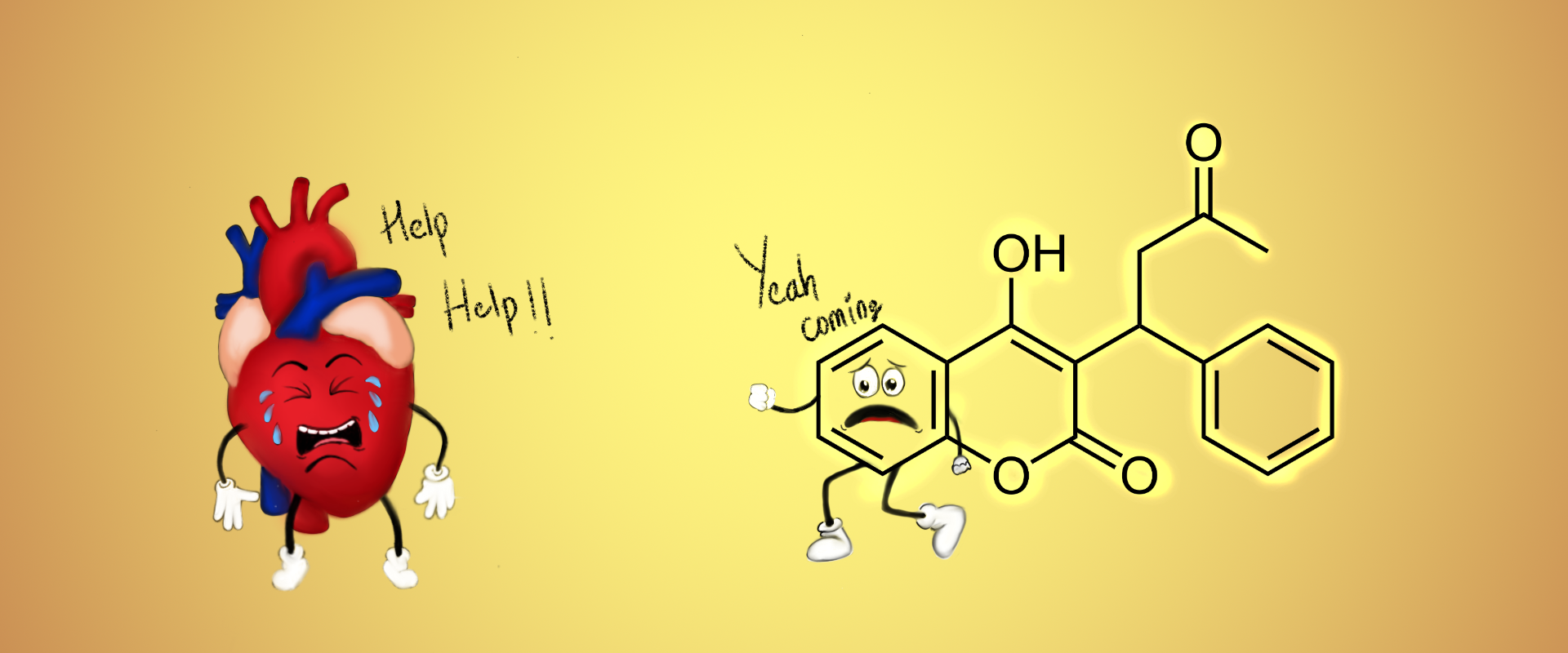Warfarin
May 8, 2022 | 5 min read

May 8, 2022 | 5 min read

During the 1920s, a sudden outbreak of a mysterious disease caused hundreds of cows to bleed to death in the Northern parts of America. Examination by local veterinarians Frank Schofield and Lee Roderick showed that the dead cows suffered severe internal bleeding. They were able to independently conclude that the affected cattle had fed on damp, mouldy sweet-clover hay, which caused haemorrhaging and hence the internal bleeding and severe bruising. The disease was thus called the ‘sweet-clover disease’.
The apparent advice from the veterinarians was to look for an alternate fodder for the cattle, which the already poor farmers could not afford. Since many made a living out of livestock, the disease left hundreds of farmers destitute.
In February 1933, nearly after a decade of the disease outbreak, Ed Carlson, a desperate local farmer, who had already lost many of his livestock to the disease, loaded his truck with a dead cow, a can full of unclotted blood and 100 pounds of sweet clover hay and set out to get help. He travelled 200 miles on the lookout for an answer. His path led him to a biochemist, Karl Link.
This is the chance meeting that is believed to have ignited a spark in Link.
Link, along with his colleagues, set out to hunt for the chemical responsible for causing the haemorrhage. After around six years, they were able to find the substance responsible for it all, ‘dicoumarol’. It is structurally 3,3′-methylene-bis(4-hydroxycoumarin), which, when combined with blood, prevents clotting.
Soon, a derivative of coumarin, compound 42, was found to be an effective rodenticide. It was named ‘warfarin’ ('warf’ standing for Wisconsin Alumni Research Foundation, which had funded Link’s works).
Warfarin kills rats by causing internal haemorrhage. It quickly became the best selling rat poison across the world.
In 1951, a US naval officer consumed warfarin in an attempt to end his life. He was saved, however, by the administration of vitamin K.
This event kindled research on putting warfarin to clinical use in humans. Although other anticoagulants such as heparin were then used in the market, warfarin had the advantage of high water solubility and oral administration, whereas heparin required parenteral administration.
Warfarin was approved for clinical use in 1954 and was sold under the trade name ‘coumadin’.
In 1955, coumadin was used to treat US president Dwight D. Eisenhower following a heart attack. This further boosted the drug’s popularity. However, warfarin’s action mechanism was not discovered until 1978. John W. Suttie and his colleagues demonstrated that warfarin disrupts vitamin K metabolism by inhibiting the enzyme epoxide reductase.
Today, even though there are plenty of other anticoagulants, warfarin is still used to treat millions of people worldwide. It all comes down to a simple chance meeting between a desperate dairy farmer and a determined biochemist.